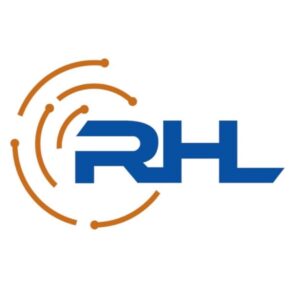 Authors:
Authors:
- Nathaniel Hancock, he/him, undergraduate student, Electrical & Computer Engineering, University of Washington, Seattle campus
- Rania Hussein, she/her, Associate Teaching Professor, Electrical & Computer Engineering, University of Washington, Seattle campus
Project Description
Engineering education is often quite expensive, and this cost can present a significant barrier to entry for students from low-income or underrepresented minority backgrounds. In combination with the vast scope of most topics in engineering, it can be challenging for students to independently approach with limited support. These challenges present themselves prominently in the field of Electrical and Computer Engineering. We sought to begin to improve equity in this field by developing a curriculum on introductory digital logic that is publicly accessible and uses remotely accessible affordable hardware.
The RHL-BEADLE curriculum guided students through a series of six labs that introduced them to basic topics in digital logic and showed them how to use the hardware needed to complete these labs. This curriculum is intended for pre-college or community college students to prepare them for courses in digital logic taught at the junior level in a four-year institution. This project involved the administration and ensuing evaluation of the curriculum in the setting of a sophomore level Electrical Engineering course at the University of Washington.
Project Question
Equitable access to learning resources is a major roadblock for many students in developing their skills in any field. The RHL-BEADLE Project seeks to reach and empower anyone who is curious about electronics, electrical and computer engineering, and digital logic concepts by providing effective curriculum and tools.
Context
In our test setting, we delivered the curriculum to students in Electrical Engineering as a part of the overall curriculum in the course EE 271: Digital Circuits and Systems in the Autumn quarter of 2022. The students enrolled in this course were all Electrical Engineering majors, mostly with technical backgrounds, but with limited knowledge of the subject matter. This course was a degree requirement for many of the students enrolled.
Methods
The course teaching team assessed the effectiveness of the curriculum using student responses to surveys on the following metrics:
- Income and ethnic diversity of students
- Self-assessed comfort with the current topics
- Multiple choice assessments of student knowledge
The first of these metrics was used to see if our findings were generalizable, while the second and third metrics were used to gauge the effectiveness of the curriculum.
Impact/Assessment
The impact of this project was determined using self-assessed comfort and multiple choice assessments, given to students both before and after completing labs to ensure success metrics were evaluated based on the improvement of student answers in response to having completed the lab, and not based on prior knowledge.
Our results showed significant improvements in both comprehension and confidence in learned skills. Further, students reported the use of remote hardware was effective in enabling them to effectively complete their labs.
Ultimately, we believe these results indicate that the curriculum is prepared to be delivered to the target audience: pre-college and community college students.
Application
The RHL-BEADLE curriculum shows that curriculum guided towards independent learning can be effective, even in topics that are traditionally challenging for students to learn. Further, the effective use of remote hardware demonstrates that the tactility of hands-on learning—especially as it pertains to engineering education—can be achieved using tools that are virtually accessible, rather than physically. These findings can be widely applicable, as curriculum in many different disciplines can be altered to improve student agency in their learning through self-assessment. Further, the effective use of remote hardware indicates the possibility of further virtualization of learning tools to enable wider access to resources that can benefit interested learners.